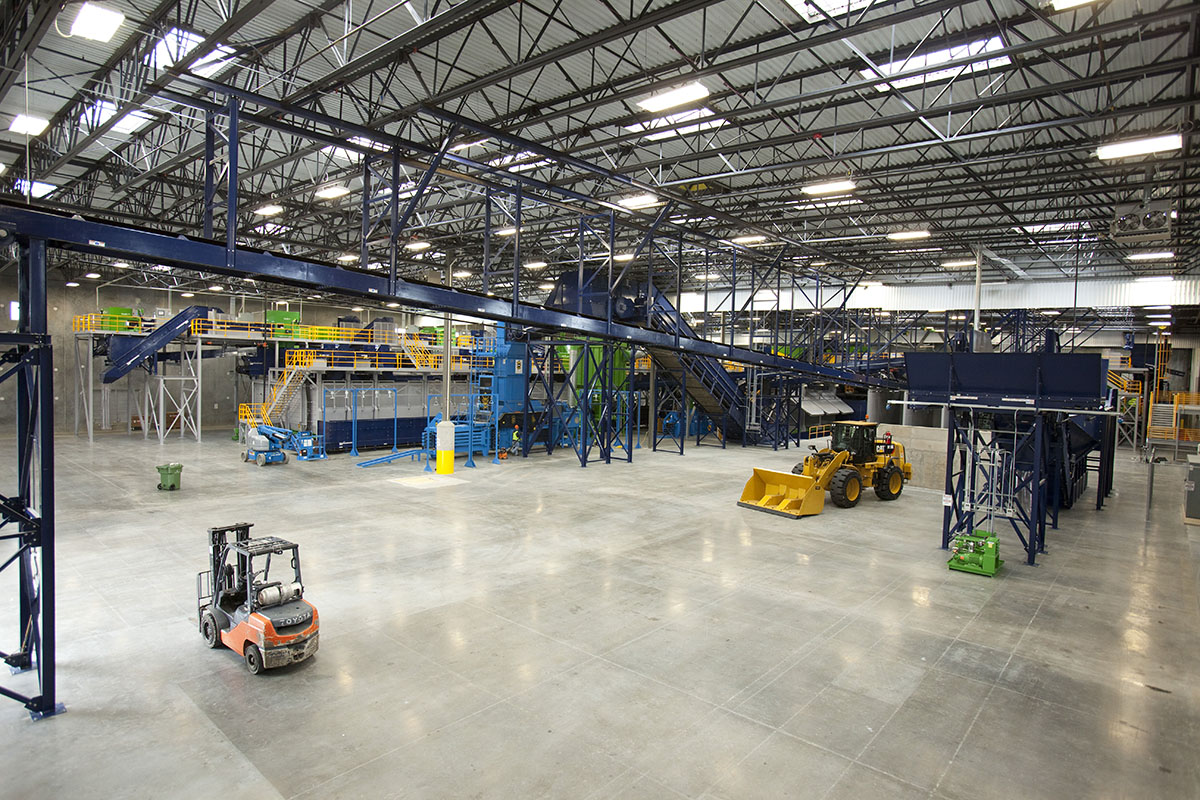Building a Municipal Waste Recycling Plant
Introduction
Municipal solid waste (MSW), commonly known as household waste, consists of everyday items such as packaging, food scraps, and discarded products. With the growing awareness of environmental issues and the need for sustainable practices, constructing a municipal solid waste recycling and processing facility has become essential. This article outlines the steps involved in building such a facility.

1.Conducting a Feasibility Study
Before embarking on any construction project, it is crucial to conduct a thorough feasibility study. This includes analyzing local waste generation rates, understanding the composition of the waste, and assessing the potential market for recycled materials. Additionally, identifying suitable technologies and processes that can handle the specific types of waste generated in your area is key.
2. Site Selection and Planning
Choosing the right location for the facility is critical. Factors to consider include proximity to residential areas, accessibility for waste collection vehicles, and the availability of utilities such as water and electricity. Environmental impact assessments must also be conducted to ensure compliance with local regulations and minimize ecological disruption.
3. Designing the Facility
The design phase involves creating detailed plans for the physical layout of the facility. This includes designing the receiving area where waste will be unloaded, the sorting and processing areas, and the storage facilities for recyclable materials. It is important to incorporate modern technologies such as automated sorting systems to maximize efficiency and reduce labor costs.
4. Obtaining Permits and Approvals
Securing all necessary permits and approvals from local government agencies is a legal requirement. This process may involve obtaining environmental clearances, building permits, and operational licenses. Engaging with regulatory bodies early in the planning stages can help streamline the approval process.
5. Construction Phase
Once all the groundwork is complete, construction can begin. This stage involves building the physical infrastructure, installing machinery, and setting up the necessary equipment. Quality control measures should be implemented to ensure that the facility meets safety and operational standards.
6. Testing and Commissioning
After construction, a period of testing and commissioning is required to ensure that all systems are functioning properly. This includes testing the machinery, validating the sorting and processing capabilities, and training staff to operate the facility effectively.
7. Operations and Maintenance
Once the facility is fully operational, ongoing maintenance and management are necessary to keep it running smoothly. Regular inspections and maintenance schedules help prevent breakdowns and ensure optimal performance. Continuous improvement through technological upgrades and staff training is also important.
Conclusion
Building a municipal solid waste recycling and processing facility is a significant undertaking that requires careful planning and execution. By following these steps, municipalities can create a sustainable solution for managing household waste while contributing positively to the environment and the local economy.
-
 Trommel screenTrommel screen, also known as drum screens, are widely used in various industries for sorting and separating materials.Get Quote
Trommel screenTrommel screen, also known as drum screens, are widely used in various industries for sorting and separating materials.Get Quote -
 Crop straw double shaft shreddApplications:Biomass Energy Production: Shredded straw can be used as a feedstock for bioenergy plants to produce electricity or heat.Livestock Feed: Reduced-si...Get Quote
Crop straw double shaft shreddApplications:Biomass Energy Production: Shredded straw can be used as a feedstock for bioenergy plants to produce electricity or heat.Livestock Feed: Reduced-si...Get Quote -
 Zhongcheng Air Drum SeparatorAir drum separators effectively separate lightweight materials (e.g., plastics, paper) from heavier materials (e.g., metals, glass). This high efficiency is cru...Get Quote
Zhongcheng Air Drum SeparatorAir drum separators effectively separate lightweight materials (e.g., plastics, paper) from heavier materials (e.g., metals, glass). This high efficiency is cru...Get Quote
-
2023-01-12Horizontal Semi-Auto Hydraulic BalerSemi automatic balers are used across the logistics, recycling and manufacturing sectors to process large volumes of waste materials such as cardboard, film, pa...
-
2023-01-12Waste FeederWaste feeder was specially designed to optimize municipal solid waste sorting systems. The Drum Feeder ensures that your sorting system, baler or shredder has a...
-
2024-05-18Hydraulic Cone CrusherHydraulic Cone Crusher integrates machinery, hydraulic pressure, electrics, automation, and intelligent control, which can be used for medium crushing, fine cru...
-
2024-07-12Crush to Create: The Ultimate Eco-Friendly Plastic Shredder RevolutionThe working principle of a plastic shredder is mainly to tear large plastic materials into small pieces or fragments through mechanical force, in order to facil...
-
2023-01-12Double-Shaft ShredderThe Double-shaft shredder is a widely used industrial shredder that efficiently processes various mixed waste materials, such as construction waste, industrial ...



